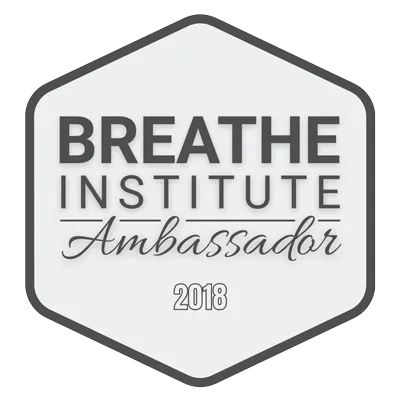Tongue Tie Q & A
Melanie L. Throne, DDS, PA - General Family Dentist located in Fort Worth, Texas
Tongue tie and lip tie are common conditions that can make it difficult to move your tongue or mouth. Sometimes identified shortly after birth, tongue lip and cheek ties can make breastfeeding hard for newborn babies. However, people of all ages can have oral tissue ties, and these conditions can be corrected at any age. Melanie L. Throne, DDS, PA, has extensive training in Tethered Oral Tissue (TOTs) release. Find the best care for all ages at Dr. Throne’s practice located in Fort Worth, Texas, make an appointment for an initial consult by phone today to learn more. 817-735-4700
What is tongue tie?


It is now widely accepted that the ability to stick the tongue out of the mouth is not a predictable indicator of tongue tie or proper tongue function. Research is evolving in this area currently which will drastically raise the occurrence rate of tongue tie in the population. Current but dated research supports up to 11% of babies are born with tongue tie, but that number could rise to 75% or more with new definitions and ongoing research. The exact cause is unknown, but it can run in families suggesting a genetic component, and it seems to be more common in boys than in girls. Since tongue tie is a midline fusion problem, current research has been focused on a mutation in the MTHFR gene group as the possible cause. This abbreviation is for methylenetetrahydrofolate reductase, and it controls all midline fusion reactions in the body as well as most all digestive and detoxification processes within many organ systems like your kidneys, liver, and gut. Problems with this gene can lead to several manifestations like Stork Bite, cleft lip and palate, urinary tract developmental issues, thyroid function issues, sacral dimpling, hair swirls, Spina Bifida, and food sensitivities like gluten and dairy. As an extension of the detoxification processes being altered with MTHFR gene mutations, all persons with identified tethered oral tissues should be especially cautious with vaccinations and anesthetics. It is strongly advised that parents of a tongue tied infant research MTHFR mutations and read the book Dirty Genes by Dr. Ben Lynch when making decisions about vaccinations and medical procedures involving anesthetics.

Early symptoms of tongue tie can often appear soon after birth, when a baby exhibits problems breastfeeding, struggles to gain weight, or mom experiences pain with latch. Unfortunately, medical personnel are often times inadequately trained or are not knowledgeable on tethers or on breastfeeding so many struggling babies and moms do not receive treatment. Many moms are even blamed or ridiculed for questioning or struggling with the process which leads to them abandoning their breastfeeding goals opting instead for the inferior option of feeding formulas with bottles. Bottle and pacifier use leads to lifelong incorrect swallow patterns, low tongue postures, and compensations in the musculature involved in feeding, speaking and swallowing. It is recommended that restrictive oral tethers be addressed in infancy, although the condition can be treated in patients of all ages since most of these conditions are currently overlooked or misdiagnosed. It is critical that infant/mother dyads be thoroughly evaluated by highly trained personnel for issues that can contribute to breastfeeding difficulties like cranial nerve dysfunction, body issues like torticollis, etc. prior to release procedures to insure need and success. This involves lactation consultants (IBCLCs) and body workers like occupational therapists, chiropractors, and craniosacral massage therapists to name a few.
What are lip & buccal ties?


What are the symptoms of restricted tethered oral tissues (TOTs)?

Milk Tongue

Stork Bite
Most people first notice tongue, lip, or buccal ties in newborn babies or in children as they begin to speak. Tethers may present in older children and adults being noticed in conjunction with crooked teeth, speech issues, or body aches and pains. Tongue or lip tie can impact your ability to speak clearly or eat comfortably. In older children, speech and language pathologists may identify restrictive or tethered oral tissues. In some cases, tongue or lip ties may not have any symptoms, at least not symptoms that the parent or patient or medical physician can readily connect to reduced function. Physicians get one hour of lecture on tethers and feeding in medical school, and so most are not familiar with any of these issues and unfortunately often dismiss patient's and parent's concerns when voiced.
Common symptoms of tongue tie and lip tie include:
InfantShallow or poor latchHigh or bubble palate Torticollis Colic/gassy/gulping air Lip nursing blister/thin whitish lips Reflux Slow weight gain Milk tongue/Thrush misdiagnosis Biting or chewing at the breast to feed Clicking sounds/popping off the breast Arching when nursing Recessed lower jaw/ jaw quiver Falls asleep while nursing/fists closed & baby seems tense Feeds all the time/never satisfied Refuses nipple, bottle, or pacifier Dislikes carseat/"scoot crawling" Long nursing sessions with short breaks Spitting up/gagging Sleep issues/Snoring/ Sleep apnea |
MotherPain, often extreme, with nursingLipstick shaped nipple Mastitis Bleeding/cracked nipples Over or Under supply Thrush diagnosis Plugged or clogged duct Flat crushed nipple Vasospasm Blanched nipples Incomplete drainage Depression/Anxiety Bruised nipples and breast |
ChildSpeech difficulties delay or lispDark circles under eyes/allergy shiners Picky eater food & texture aversions Mouth breathing/drooling/Chapped lips Bed wetting ADHD/ADD/ODD/OCD Gagging, choking, vomiting food but especially liquids Migraines/headaches Food falls out, washes bite down instead of swallowing/pockets food Crooked or touching baby teeth/decay High palate Allergy or sinus issues Enlarged tonsils and adenoids Snoring, sleep apnea, night terrors Clumsiness or posture issues Digestive issues/IBS/Sensitivities Anxiety/Depression/Melt downs |
AdultForward head posture/Dowager's humpMigraines/headaches Neck, back, face pain/Scoliosis TMJ pain/clicking/popping/locking Crooked teeth/recessed jaws Chapped lips/premature wrinkles Cavities/decay/gum disease Facial & ear asymmetry High palate/food trapping Bladder issues especially at night Gummy smile/narrow arches Grinding/Bruxism/Can't open wide Snoring/Sleep apnea/Anxiety Reflux/ IBS/ Digestive sensitivities Long face syndrome/narrow Picky eater Gagging if brushing or drinking liquids Difficulty with dental x-rays Speech issues when talking fast, tired Open bite/underbite/overbite |
How are tethered oral tissues (TOTs) related to body posture and tension?


Deep Front Plane
Our bodies are intricately and perfectly designed connected by a fascial web beneath our skin and throughout all our organ systems. Our body has the ability to reinforce itself with this webbing by recruiting more of it to help to stabilize and reinforce compromised areas. If one area, like the tongue, is tethered and its function is restricted, our body still has to swallow and breathe, etc., so other muscles and tissues are recruited to help assist for survival despite not being designed for this additional function. More fascia will be recruited and used to reinforce these additional functional loads. There are standard fascial planes that run throughout the body in all different directions, but no two people are exactly alike. A very well known plane involving the tongue is called the Deep Front Plane. It runs from the tongue base down through the neck and chest attaching to the diaphragm and then continues all the way through the abdomen and legs to the toes. When a tongue tie is released, it would therefore, stand to reason that there would be tension changes on the entire length of this fascial plane that would require body work and manipulation to break it all free. This is often where we implement the popular TummyTime Method for babies. 
How are restricted oral tissues treated?
Dr. Throne uses laser technology for soft tissue release of all restrictive tethers in the oral cavity on all ages. Dr. Throne is laser certified by the Academy of Laser Surgery (ALD) and adheres to the strictest and most current laser safety protocols. Since she has devoted years to studying different techniques, she is well-versed and experienced treating and releasing all ages. She has established multiple Facebook support pages for patients and parents and has a team of well over 50 specialty professionals to ensure the most successful outcomes. As an Ambassador with The Breathe Institute training under Dr. Soroush Zaghi, Dr. Throne approaches each and every release using the Functional Frenuloplasty Technique no matter the patient's age. The procedure takes only a few minutes and is virtually painless. After the procedure, the tethered tissues are freed immediately. It is critical before and after the procedure to follow all stretching and exercise guidelines given by Dr. Throne and her treating team to experience a great, predictable, and stable outcome ensuring long term success.
If you or a loved one has tongue tie or lip tie, Dr. Throne and her team can help. To get started, request your first appointment online today or call the office at 817-735-4700.
Nickel Sensitivity Is Associated with GH-IGF1 Axis Impairment and Pituitary Abnormalities on MRI in Overweight and Obese Subjects
















